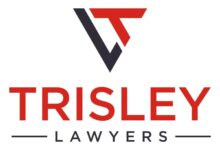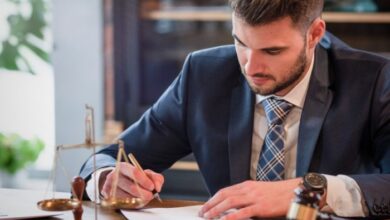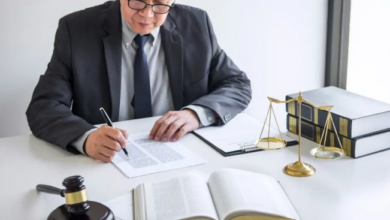Navigating Product Liability Law: Ensuring Consumer Protection and Manufacturer Responsibility
In a world driven by consumerism, product liability law stands as a crucial safeguard, protecting individuals from harm caused by defective products. This intricate legal landscape encompasses a vast array of principles, regulations, and responsibilities, with product liability lawyers serving as staunch advocates for consumer rights.
Join us as we delve into the complexities of product liability law, exploring the roles and responsibilities of manufacturers, the types of product liability claims, and the significance of product liability insurance. We’ll also shed light on recent trends and developments in this dynamic legal field.
Product liability law is a multifaceted discipline that encompasses a wide range of legal concepts and principles. It delves into the responsibilities of manufacturers to ensure product safety, the rights of consumers to seek compensation for injuries caused by defective products, and the legal theories used to establish liability in such cases.
As we navigate this intricate legal terrain, we’ll uncover the complexities of product liability claims, the burden of proof, and the role of expert witnesses in product liability litigation.
Understanding Product Liability Law
Product liability law governs the legal responsibilities of manufacturers, distributors, and sellers for the safety of products they produce or sell. This area of law aims to protect consumers from defective or dangerous products and ensure that companies take appropriate measures to prevent injuries or damages caused by their products.
Fundamental Principles and Concepts
Product liability law is based on several fundamental principles and concepts, including:
- Strict Liability: In certain cases, manufacturers and sellers can be held liable for injuries or damages caused by their products, even if they did not intend to cause harm or were not negligent. This is known as strict liability and applies to products that are inherently dangerous or defective.
- Negligence: Product liability claims based on negligence require plaintiffs to prove that the manufacturer or seller failed to take reasonable care to prevent injuries or damages caused by their products. This can include failing to properly design, manufacture, or warn consumers about potential hazards associated with the product.
- Breach of Warranty: Product liability claims based on breach of warranty allege that a manufacturer or seller made false or misleading statements about the quality or safety of their products. This can include express warranties (explicit promises about the product’s performance or characteristics) or implied warranties (warranties that are assumed by law, such as the implied warranty of merchantability).
Product Safety Regulations and Standards
Product safety regulations and standards play a vital role in preventing defective or dangerous products from reaching consumers. These regulations are typically set by government agencies and industry organizations and establish minimum safety requirements for various types of products. Compliance with these regulations and standards is often a defense in product liability lawsuits, as it demonstrates that the manufacturer or seller took reasonable steps to ensure the safety of their products.
Responsibilities of Product Manufacturers
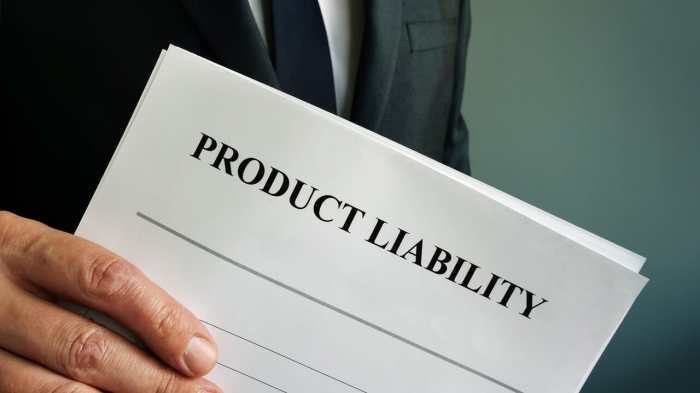
Product manufacturers have a legal and ethical responsibility to ensure the safety of their products. This includes designing, testing, and manufacturing products that meet safety standards and regulations. Manufacturers must also provide clear and accurate instructions for using their products safely.
Product Design
Product design is the first step in ensuring product safety. Manufacturers must carefully consider the potential hazards of their products and take steps to minimize these risks. This includes using safe materials, designing products that are easy to use and understand, and providing adequate warnings and instructions.
Product Testing
Product testing is essential for identifying and correcting potential safety hazards. Manufacturers must conduct rigorous testing to ensure that their products meet safety standards and perform as intended. Testing should be conducted under a variety of conditions to simulate real-world use.
Quality Control
Quality control is the process of ensuring that products are manufactured to the highest standards. Manufacturers must have a quality control system in place to identify and correct any defects in their products. This system should include regular inspections of products and materials, as well as testing of finished products.
Foreseeability
In product liability cases, foreseeability is a key factor in determining whether a manufacturer is liable for injuries caused by their product. Foreseeability refers to the ability of a reasonable person to anticipate that a product could cause harm. Manufacturers are generally not liable for injuries that are not foreseeable.
However, they may be liable for injuries that are foreseeable, even if they are not likely to occur.
Types of Product Liability Claims
Product liability claims are legal actions brought against manufacturers, distributors, or sellers of products that cause harm to consumers. These claims can be based on various legal theories, and the elements of each claim may vary depending on the jurisdiction and the specific circumstances of the case.
Strict Liability
Strict liability is a type of product liability claim that does not require the plaintiff to prove that the manufacturer or seller was negligent or at fault. Instead, the plaintiff must only show that the product was defective and that the defect caused their injuries.
Strict liability claims are often based on the theory that manufacturers have a duty to produce safe products and that they should be held liable for any injuries caused by their products, regardless of whether they were negligent.
Negligence
Negligence is a type of product liability claim that requires the plaintiff to prove that the manufacturer or seller was negligent in designing, manufacturing, or selling the product. To establish negligence, the plaintiff must show that the manufacturer or seller: (1) owed a duty of care to the plaintiff, (2) breached that duty of care, (3) the breach of duty caused the plaintiff’s injuries, and (4) the plaintiff suffered damages as a result of their injuries.
Breach of Warranty
Breach of warranty is a type of product liability claim that arises when a product fails to meet the express or implied warranties made by the manufacturer or seller. Express warranties are specific promises made about the product, such as a guarantee that the product will perform in a certain way.
Implied warranties are warranties that are automatically imposed by law, such as the warranty of merchantability, which implies that the product is fit for the ordinary purpose for which it is intended.
Defenses to Product Liability Claims
Manufacturers and sellers of products have a number of defenses that they can raise in response to product liability claims. Some of the most common defenses include:
- The product was not defective.
- The defect in the product was not the cause of the plaintiff’s injuries.
- The plaintiff misused or altered the product.
- The plaintiff assumed the risk of injury by using the product.
- The plaintiff’s injuries were caused by a third party.
Proving Product Liability
Establishing product liability requires meeting the burden of proof and presenting evidence to support the claim. The focus lies on proving that a defective product caused the plaintiff’s injuries or damages.
In product liability cases, the plaintiff must demonstrate that the product was defective and that the defect caused their injuries or damages. The burden of proof lies with the plaintiff to prove these elements.
Types of Evidence
Various types of evidence can be used to establish product liability, including:
- Direct Evidence: This includes eyewitness accounts, testimony from experts, and physical evidence, such as the defective product itself.
- Circumstantial Evidence: This involves inferring the cause of an injury or damage based on indirect evidence, such as the product’s design, manufacturing process, or history of similar accidents.
- Documentary Evidence: This includes records, manuals, and other documents related to the product’s design, manufacture, and distribution.
Role of Expert Witnesses
Expert witnesses play a crucial role in product liability litigation. They provide specialized knowledge and opinions to help the jury understand complex technical or scientific issues related to the case.
Expert witnesses can testify about:
- The product’s design and manufacturing process
- The nature and extent of the defect
- The causal relationship between the defect and the plaintiff’s injuries
- Industry standards and practices
Product Recalls and Liability
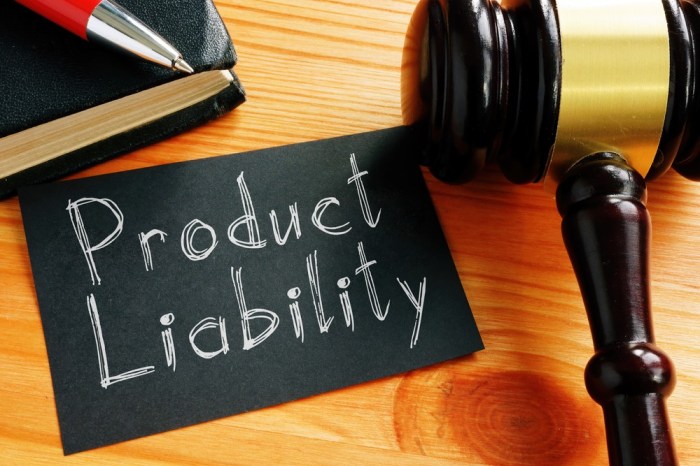
Product recalls occur when a company voluntarily or involuntarily removes a product from the market due to safety concerns. The process involves identifying defective products, notifying consumers, and taking corrective actions to prevent further harm.
Manufacturers have a legal responsibility to notify consumers of product defects. This notification can be done through public announcements, media releases, or direct communication with customers. The goal is to inform consumers about the potential risks associated with the product and provide instructions for returning or disposing of it.
Examples of High-Profile Product Recalls
Product recalls can have a significant impact on companies. Some high-profile product recalls include:
- Toyota Unintended Acceleration Recall (2009-2010): Toyota recalled millions of vehicles due to sudden unintended acceleration, resulting in numerous accidents and fatalities. The recall led to a loss of consumer confidence and a significant financial impact on the company.
- Samsung Galaxy Note 7 Battery Recall (2016): Samsung recalled the Galaxy Note 7 smartphone due to reports of exploding batteries. The recall resulted in a loss of sales, damage to the company’s reputation, and a ban on the device by several airlines.
- Johnson & Johnson Talcum Powder Recall (2020): Johnson & Johnson recalled its talcum powder products due to concerns about asbestos contamination. The recall led to numerous lawsuits and a decline in sales for the company.
These examples illustrate the potential consequences of product recalls, including financial losses, reputational damage, and legal liability.
Product Liability Insurance
Product liability insurance protects manufacturers from financial losses resulting from product-related claims. It is a crucial component of a comprehensive risk management strategy.
There are two main types of product liability insurance policies:
- Occurrence Policies: Cover claims arising from products sold or distributed during the policy period, regardless of when the injury or damage occurs.
- Claims-Made Policies: Cover claims filed during the policy period, regardless of when the product was sold or distributed.
Factors to consider when choosing a product liability insurance policy:
- Policy Limits: The maximum amount the insurance company will pay for a claim.
- Deductible: The amount the insured is responsible for paying before the insurance company begins to cover the claim.
- Coverage Exclusions: Any products or activities that are not covered by the policy.
- Claims Handling: The insurance company’s process for handling claims and providing legal defense.
- Policy Cost: The premium charged for the policy.
Manufacturers should carefully review their product liability insurance policies and work with their insurance brokers to ensure they have adequate coverage to protect their business.
Role of Product Liability Lawyers
Product liability lawyers play a crucial role in protecting consumers’ rights and ensuring that manufacturers are held accountable for defective products. They represent individuals who have suffered injuries or damages due to faulty or unsafe products, helping them seek compensation and justice.
Skills and Expertise
Successful product liability lawyers possess a unique combination of legal knowledge, technical expertise, and litigation skills. They must have a deep understanding of product liability laws, regulations, and legal precedents. Additionally, they need to be well-versed in various scientific and engineering disciplines to comprehend complex product designs and identify potential hazards.
Effective communication, negotiation, and trial advocacy skills are also essential for building strong cases and representing clients effectively in court.
Notable Cases
Prominent product liability lawyers have handled numerous high-profile cases, achieving significant settlements and verdicts for their clients. One notable example is the case of Erin Brockovich, who successfully represented a group of residents against a chemical company responsible for contaminating their water supply.
Another prominent case is the Ford Pinto case, where lawyers demonstrated that the company knew about the vehicle’s design缺陷, resulting in a substantial settlement for victims. These cases highlight the vital role product liability lawyers play in holding manufacturers accountable and promoting product safety.
Recent Trends in Product Liability Law
Product liability law is continuously evolving to address new technologies, changing consumer expectations, and emerging legal theories. Here are some notable trends shaping the landscape of product liability litigation:
Technology’s Impact on Product Liability
The rapid advancement of technology has brought about a surge in product liability cases involving complex and innovative products. This includes areas such as autonomous vehicles, artificial intelligence, medical devices, and consumer electronics. As technology becomes more integral to our daily lives, manufacturers face increasing scrutiny for potential defects and safety concerns.
Expansion of Product Liability Theories
Courts have expanded traditional product liability theories to accommodate the unique challenges posed by modern products. This includes the recognition of new causes of action, such as failure to warn, negligent design, and strict liability for defective products. These evolving theories aim to provide greater protection for consumers and hold manufacturers accountable for the safety of their products.
Increased Focus on Consumer Expectations
There is a growing emphasis on consumer expectations in product liability cases. Courts are increasingly considering how a reasonable consumer would use a product and whether the manufacturer adequately warned of potential risks. This shift in focus reflects the recognition that consumers rely on manufacturers to provide safe and reliable products.
Role of Social Media and Online Reviews
Social media and online review platforms have become powerful tools for consumers to share their experiences with products. Negative reviews and complaints can quickly go viral, damaging a company’s reputation and leading to product recalls and liability claims. Manufacturers must actively monitor online sentiment and respond promptly to consumer concerns to mitigate potential legal risks.
Potential Future Changes in Product Liability Law
As technology continues to advance and consumer expectations evolve, product liability law is likely to undergo further changes. Potential areas of future development include the expansion of liability for software defects, the impact of artificial intelligence on product safety, and the regulation of emerging technologies like autonomous vehicles and drones.
Outcome Summary
Product liability law serves as a cornerstone of consumer protection, ensuring that manufacturers are held accountable for the safety of their products. Through the tireless efforts of product liability lawyers, consumers have a voice to seek justice and compensation for injuries sustained due to defective products.
As technology continues to advance and products become increasingly complex, the landscape of product liability law will undoubtedly evolve. However, one thing remains constant: the unwavering commitment to safeguarding consumer rights and fostering a marketplace where safety is paramount.
